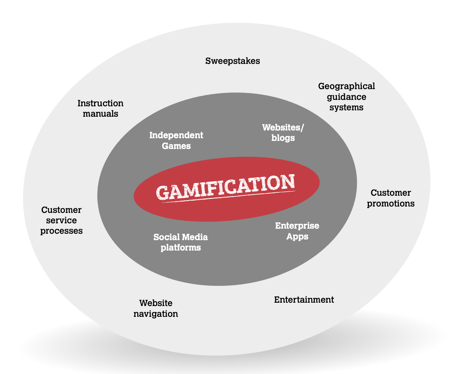There are trends that stay – gamification is one of them! The term describes a strategy that uses game-like elements in an attempt to increase people's motivation, engagement, and interaction. This opens up an exciting opportunity for companies to offer both employees and customers an entertaining change in their everyday lives. When it comes to potential customers, gamification is a promising lead generation strategy.
Want to learn more about how you can use gamification marketing campaigns to engage customers and attract new ones? Then download our free whitepaper on this topic:
Old or young, playing is human nature. The tempting prospect of victory combined with the joy of the game can also be used profitably for companies in the B2B sector.
The importance of gamification in the digital age is closely linked to technological developments and the changing way people interact, learn, work, and entertain themselves in today's world. The proliferation of smartphones, tablets, social media and other digital technologies has created the opportunity to implement gamification on a large scale and make it accessible to interested parties anytime, anywhere. Our experience with many different client projects in the field of gamification has shown that it can be worthwhile for companies to break new ground and use the gamification concept to kick-start marketing in favour of customer retention rates, lead generation, and increased sales.
Table of Content:
- What is gamification?
1.1. Definition and the Core Principles behind Gamification
1.2. The Psychology of Motivation and Engagement: Why Gamification Works - Technological aspects of Gamification
2.1. User Engagement Analysis and Behavior Analytics
2.2. Important KPIs for Gamification
2.3. Personalisation and Adaptive Learning
2.4. Feedback and Continuous Improvement
2.5. Interactive Narratives and Storytelling - Gamification mechanics – versatile & effective
3.1. Example of Event Gamification
3.2. Example of season-specific Gamification - Advantages of Gamification at a glance
4.1. 6 Tips for Promoting Sales with Gamification
4.2. Possible Uses and Examples - Gamification in different Industries
5.1. Retail: Create attractive Shopping Experiences
5.2. Healthcare: Health Management meets Fun
5.3. Tourism: Immersive Travel Experiences through Gamification
5.4. The all-rounder for every Industry: Advent Calendar for Lead Generation and Customer Loyalty - Analytical Depth: Measuring and Predicting Gamification Success
6.1. Predictive Modeling and Churn Forecasting
6.2. Real-time Analytics, User Journey Mapping & A/B Testing Analysis - The Do's and Don'ts: Lessons from Practice
- Summary
What is gamification?
Definition and the Core Principles behind Gamification
“Gamification” refers to the strategy of offering a fun competition or challenges in a non-game context using typical game elements such as points, high scores, leaderboards, or rewards.
The aim is to use gamified incentives to influence user behaviour, make tasks more interesting, encourage the engagement of interested parties, and motivate users to participate in activities or achieve specific goals.
The Psychology of Motivation and Engagement: Why Gamification Works
Gamification is a particularly effective marketing strategy, among other reasons, because this strategy usually uses a reward system, be it in the form of points, virtual rewards, or ultimately very real rewards such as vouchers that can be won. These rewards activate the reward system in the brain and generate positive feelings, thus increasing motivation.
Gamification also appeals to the behaviour of people who like to compare themselves with others. Gamification takes advantage of this urge to compete by introducing competition and possibly leaderboards, etc. Users thus develop the motivation to improve and possibly achieve further goals. Not only does the strategy keep users motivated, but it can also encourage them to come back regularly and build stronger loyalty through a positive experience.
Technological aspects of Gamification
User Engagement Analysis and Behavior Analytics
Depending on the structure of the game, there are different possibilities for user interaction with gamified elements. Traditionally, gamification elements are often used to motivate users to participate in certain activities or tasks. For example, users can receive points for a certain level of engagement, e.g. for participating in a quiz or survey.
Rewards are a key element of gamification - this includes collecting points, for example. These rewards can then be exchanged for benefits, discounts, or virtual items.
In the context of the competitive aspect, players also like to track their progress: gamification elements often provide a visual representation of progress, such as status indicators, high score indicators, and so on. If users can track their own progress well, they are more motivated to continue and achieve their goals.
Other important elements of gamification for engagement analysis are feedback and progress assessment. User input can take the form of affirmation, praise, or constructive criticism, helping participants to improve their skills.
Users like to share their successes with others – for example in social networks, blogs, or forums. Social interaction can be stimulated through gamification and encourage other users to play.
Depending on the gamification tool or software, there are often integrated analytical tools to evaluate the success of the gamification campaign. Integrations with analytical tools such as Google Analytics, Hotjar, or Tracify are often possible.
Behavioural analysis should not be neglected as it plays a crucial role in the implementation and optimisation of gamification. It makes it possible to understand users' behaviour, track their reactions to gamified elements and evaluate the effectiveness of the gamification strategy. Depending on the campaign, the following aspects are important, among others:
- Track user behaviour to record and analyse activities, interactions, progress and achievements
- Comprehensive data collection on user interactions, e.g. record points, progress in leaderboards, tasks completed, etc.
- Evaluate motivation and engagement, e.g. by analysing metrics such as frequency of participation, duration of interaction, and achievements made
- Identifying trends and patterns through analysis of user behaviour
- Personalisation thanks to behavioural analysis: behaviours and preferences can be taken into account
- Possible adaptation of the gamification strategy to better meet the individual needs of the users
- Measurement of goal achievement to assess whether users have achieved the desired actions or goals
- Evaluation of user feedback and iterations to assess the effectiveness of the elements
- Behavioural analysis to identify problems or bottlenecks in the gamified environment (e.g. to address weaknesses and optimise the user experience)
In short, users interact with gamified elements in different ways - depending on the game structure or element, device or goal of the element. However, it is important to collect or measure relevant KPIs (Key Performance Indicators) in order to evaluate and, if necessary, optimise the gamification measures.
Important KPIs for Gamification
In order to measure the success of gamification measures, relevant KPIs (Key Performance Indicators) should be collected and evaluated. Exactly which KPIs are meaningful depends, among other things, on the structure of the tool, the campaign, the corporate goals, or the implementation. The most important KPIs can include the following key figures:
- Engagement rate: How many users participate? How many “actions” are carried out? How long does an interaction last?
- Retention rate: Does a user participate more frequently in the gamified process? How many users are still active after a certain time?
- Conversion rate: What percentage of users carried out the intended action? e.g. converting users into paying customers or filling out a form
- Score and rankings: What progress has a user made and what rank does he have?
- Average length of stay: How long does a user stay in the gamified system?
- Error rate: How many errors or failed attempts does a user have during the gamified process?
- Social interactions: What interactions does the user carry out within the gamified system? e.g. sharing successes via social media
- Feedback and surveys: How do users rate the gamified experience? e.g. through comments, ratings, etc.
- Economic key figures: e.g. increase in sales, cost savings or ROI (return on investment)
Personalization and Adaptive Learning
Personalisation and adaptive learning can significantly increase user effectiveness and engagement.
For example, personalised tasks and rewards can be tailored to users' individual skills, interests, and progress. This ensures relevance for users and increases motivation. For example, a player who is already engaged in advanced tasks might receive more demanding challenges than a novice. Depending on the technical design or complexity of the gamification project, adaptive difficulty levels could also be introduced to make the tasks neither too easy nor too difficult for the user. This prevents disappointment and maintains engagement. Furthermore, a personalised progress indicator is beneficial for the user's engagement. This can be illustrated, for example, through score dashboards or other visual representations of achievements.
It is also advisable to personalise rewards to provide users with an attractive goal. This could take into account the user's personal preferences and goals, or there could be different reward options or prizes to choose from.
Intelligent tools even enable the customisation of gamification elements based on user preferences and behaviour thanks to personalisation algorithms.
Artificial intelligence will contribute to further advances in the field of personalisation of gamified processes in the future.
Feedback and Continuous Improvement
Collecting user feedback on gamified elements and processes and their implementation is extremely important for companies to be able to make optimisations to gamification campaigns. This can be done, for example, with a questionnaire or a simple “star rating” after completing a “game”. More comprehensive questionnaires should of course be analysed in detail to identify areas for improvement.
Once a feedback cycle has been completed and all important data has been collected and evaluated, the appropriate improvements can be implemented based on user feedback. Of course, the adjustments must also be evaluated after an appropriate period of time.
This “improvement process” is an ongoing affair. It will not happen that adaptations are no longer necessary at some point, as user expectations and technical conditions are constantly changing. In short, continuous exploration of the potential for optimisation is therefore mandatory.
Interactive Narratives and Storytelling
Storytelling is a proven tool in marketing – and not without reason! It aims to emotionalise topics or marketing campaigns and tries to make them stand out. This enhances the campaign and makes it seem more meaningful and relevant to users.
Even using small narrative elements to engage users in gamified platforms and captivate them emotionally can have a significant impact on participation numbers and duration.
This can be achieved, for example, by integrating characters, storylines and decision points.
A narrative framework motivates users to delve deeper into a topic and thus binds them more closely to the “story” and the associated “game”. Storytelling can also be used to place missions and tasks in a larger context. Instead of simply stringing tasks together, coherent experiences can be created that even lead to a grand adventure. This aspect is particularly beneficial for strengthening user loyalty or customer retention.
Gamification mechanics – versatile & effective
There are many different game mechanics or game elements that can be used to encourage user interaction and engagement. Below is a small compilation of the frequently used, gamified applications:
- Point systems to track performance and serve as the basis for reward systems
- Badges to recognize achievements/receive status
- Rankings to promote competition
- Challenges and tasks to progress within the “game” or the gamified application
- visual representation of progress
- Virtual Rewards e.g. through points or Real Rewards e.g. discounts or vouchers
- Storytelling to provide context for actions
- Time limits, for example, to heat up competition or increase engagement through urgency
- Competitions (between users or teams)
- Collaboration to encourage collaboration between users
- Level systems (advance to higher levels by completing tasks)
- Puzzles and quizzes to encourage interactions
- and more
Which mechanics are suitable for achieving a company's goals depends on the target group, the technical setup, the gamified application, and many other factors. Each gamification measure must be considered and designed individually.
Example of Event Gamification
There are various occasions for which gamification preparation in marketing is suitable. Whether for employees or (potential) customers: Companies often use popular events as an opportunity to run a special campaign like gamification. Popular sporting events, for example, are a great way to add some zest to everyday life, motivate employees or generate leads.
With a betting game for high-profile events such as the European Football Championship or the World Cup, you can offer prospects an exciting, emotional experience that strengthens their bond with the company.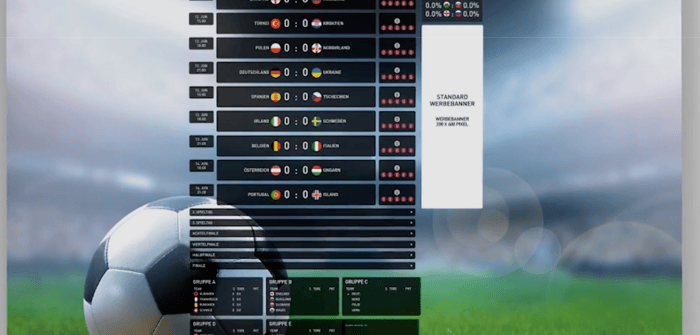
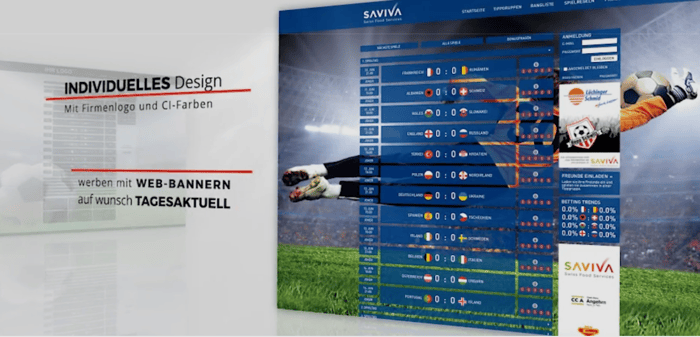
The events are usually limited in time, which means they are highly relevant and topical during the period in which they take place.
Example of season-specific Gamification
Various seasonal or seasonal gamification applications are also highly relevant and topical for a specific period of time. For example, the winter mood lends itself well to digital gamification offerings. People spend more time indoors, which means they often spend longer on digital media and crave variety. An online Advent calendar, for example, is an attractive diversion:
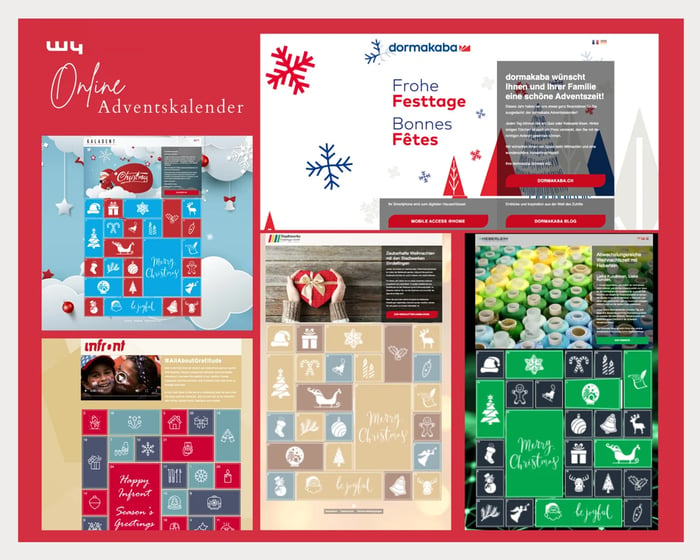
Or a Halloween search game can bring some colour, encouragement and fun into a grey autumn:
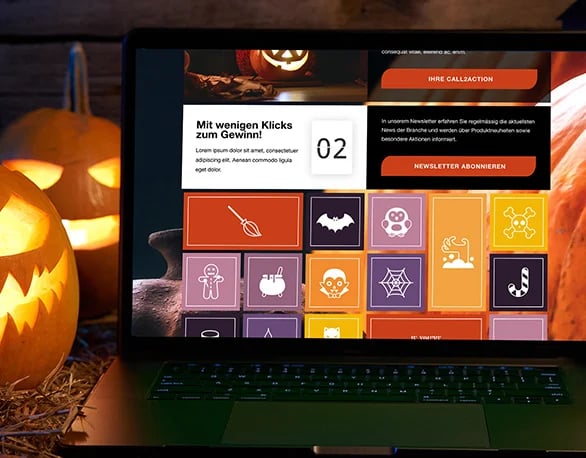
Speaking of “searching”: What could be better for the spring awakening than an exciting online Easter search?
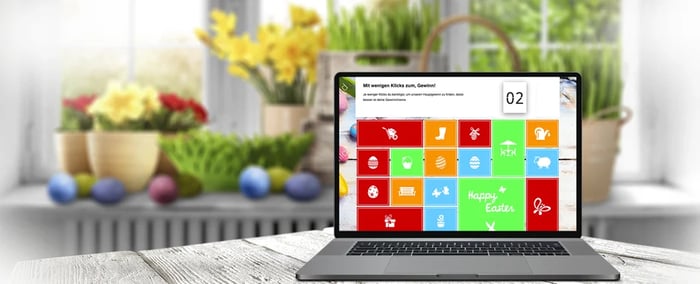
In short, you can find an attractive reason for various gamification applications and create varied marketing experiences for (potential) customers and employees. There are hardly any limits to your imagination here.
Advantages of gamification at a glance
Gamification has many advantages for companies – including in the B2B sector. Depending on the conception, technical setup, and the goals of the gamification campaign, a variety of effective and profitable measures can be implemented.
- Image maintenance & image rejuvenation: With modern, technically sophisticated gamification concepts, you stand out from clumsy competitions and dubious competitions.
- Promotion: Extraordinary gamification concepts generate publicity and new potential customer groups.
- Customer loyalty/customer care: Professional gamification concepts motivate your customers to interact. You strengthen the public's positive perception of your product, your brand and your company.
- Website optimization: As an element of content marketing, games ensure more traffic on your company website.
- Sales promotion: Whether it concerns image cultivation, customer service or sales processes - a playful approach gives your customers a positive feeling about your offer and thus promotes the motivation to buy.
- Customer request analysis: With a suitable gamification concept, you get an overview of their wishes based on your customers’ individual gaming decisions.
- Internal company optimization: Whether further training, work processes or employee analyzes - with skillfully used gamification elements, your internal company processes become more fluid, more attractive and more used.
6 Tips for Promoting Sales with Gamification
This brings us to another advantage of gamification: increasing sales. If the purchase of a product includes the prospect of making a profit, customers are demonstrably more likely to purchase it. For example, automatic participation in a competition or bonus programs with long-term discounts boost sales.
A sales-promoting gamification solution should...
- Convey the connection to the product/brand/company
- Be tailored to the target group
- Be designed to be easy to access and understand
- Show clear instructions and goals
- Give the user the opportunity to decide freely and independently
- Depending on the target group, it can be neither too simple nor too complicated
- Include the opportunity for feedback
If the game meets all of these requirements, it is called “flow”. This means that the gamification solution can develop its full effect while the target group “drifts” in the flow of gamification.
Possible Uses and Examples
Gamification solutions can be used on your own website or company app, as well as on social media. Even an independent mini-game that is only associated with your company at second glance is possible. What your gamified product ultimately looks like depends entirely on your target group. On the one hand, subtle game elements can be integrated into the website navigation, but also entire service processes and instructions can be gamified. Or you can design your gamification solution as a competition, as with our Advent calendar, Easter game, football betting game and memory game. Find out which gamification trends will determine marketing in the future in our marketing sheet.
Gamification in different industries
There is no industry that gamification cannot bring some momentum to. From tourism to retail to healthcare and engineering, all industries are suitable for gamified content - both in B2C and B2B.
Retail: Create attractive Shopping Experiences
Retail offers many opportunities for gamified elements. Many stores now offer apps with points programs, coupon campaigns and competitions.
Lidl provides a friendly, interactive example of a gamified in-app campaign with its scratch cards:
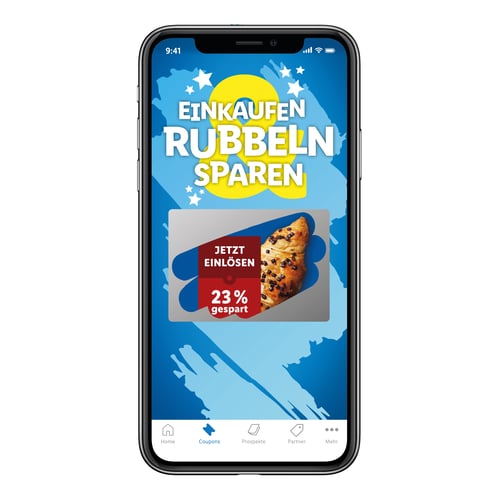
Lidl.de
After shopping, simply swipe your finger over the scratch card offered in the app and a coupon or discount will appear.
Healthcare: Health Management meets Fun
There are many ways to use gamification in healthcare: for example, for therapy purposes or for employees as a fun change in everyday life and to promote the health and well-being of employees.
Digital, playful elements have been used for therapy purposes for many years. For example, the research project “Mighty U” deals with the development of a playful application to support therapy for children and adolescents with infantile cerebral palsy (ICP).
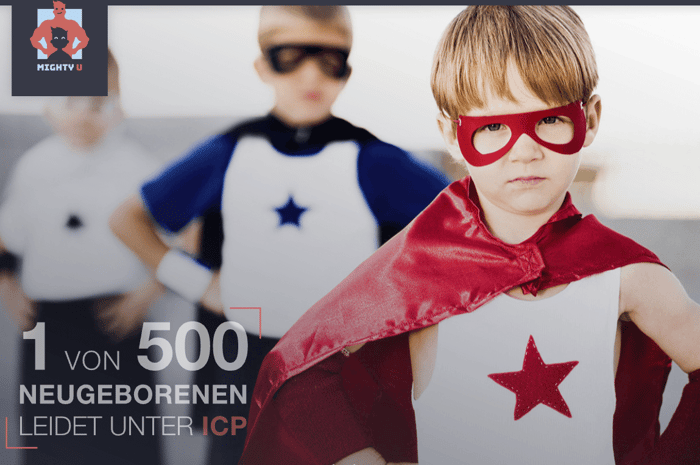
Tourism: Immersive Travel Experiences through Gamification
Many people still know it from magazines: “What type are you?” Determining the type based on questions is a tried and tested method for “readers” in marketing to get to know users better and offer them individualized content. Interlaken Tourism, for example, used this approach to determine the personal vacation type of users.
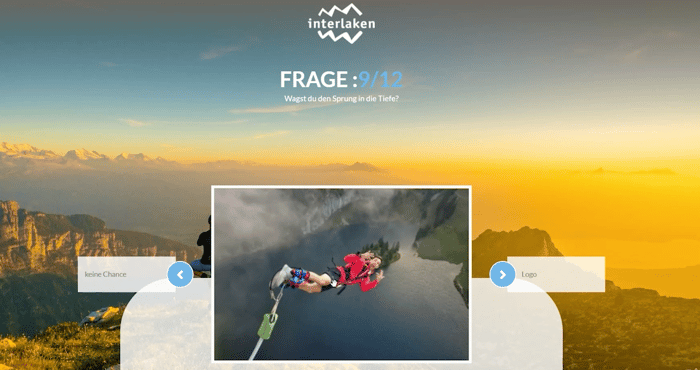
The all-rounder for every Industry: Advent Calendar for Lead Generation and Customer Loyalty
The all-rounder Spielo applications from W4 are suitable for every industry and target group and can be adapted accordingly for every industry. Our flagship and particularly popular “game” is the online Advent calendar. It is ideal for lead generation and customer loyalty. Our customer schweizstrom has already had this experience. For this customer, who predominantly belongs to the B2C sector, we set up an attractive Advent calendar in the schweizstrom design with our user-friendly Spielo platform, which achieved excellent results in the area of lead generation and customer retention.
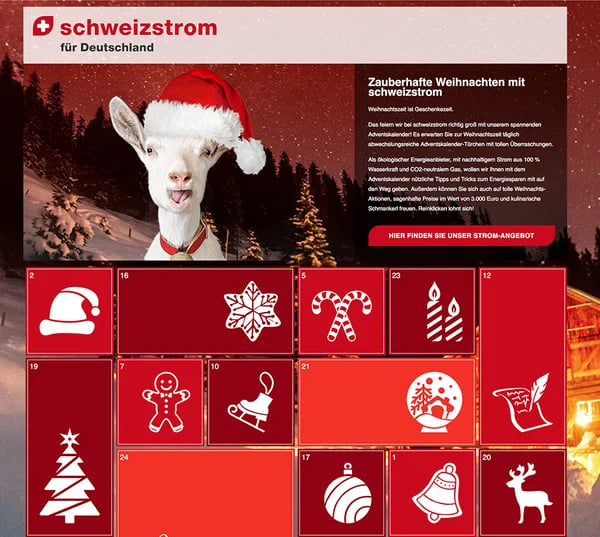
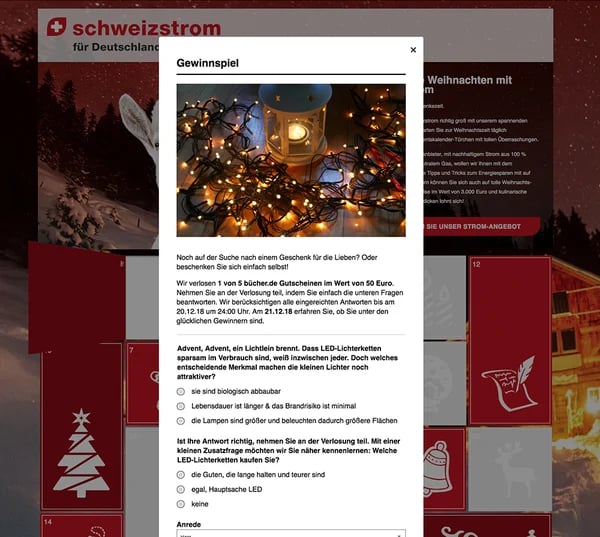
schweizstrom Adventskalender von W4
Various content such as competitions, surveys, (company) information, Christmas content such as recipes or songs and much more can be integrated into the calendar.
Analytical Depth: Measuring and Predicting Gamification Success
Predictive Modeling and Churn Forecasting
Predictive models can help you identify users who are at risk of leaving the platform or becoming inactive. By identifying such users at an early stage, targeted measures can be taken to reactivate them and increase their loyalty to the company again.
In addition, personalised game content, challenges, and rewards can be suggested by analysing past user behaviour and using predictive models. This can increase the relevance and engagement of users as it is tailored to their individual preferences.
Real-time Analytics, User Journey Mapping & A/B Testing Analysis
The term “user journey mapping”, also known as “customer journey mapping”, refers to the method of visually depicting and analyzing a user’s experience and interactions with a product, service or brand. This approach is used in many areas such as UX design (user experience design), marketing and customer service. The aim is to develop a better understanding of how users go through the different touchpoints and how they experience their interactions.
This method is also recommended in the planning, implementation and optimisation of gamified content to better understand users' paths, opportunities and experiences.
Real-time analytics can play a critical role in gamification in marketing. They help monitor and optimise the effectiveness of gamified marketing campaigns and respond to user behaviour in real time.
A/B test analyses are a popular method for marketers to evaluate the effectiveness and impact of content based on different segments. Segment “A” of a target group is offered different content than segment “B”. In this way, the performance metrics of the different assets in a campaign can be used to evaluate which content is better received.
Users could also be segmented based on their feedback, for example. This way, participants who show low engagement or give poor feedback on the gamified elements could receive alternative offers.
The Do's and Don'ts: Lessons from Practice
As with almost all marketing methods and approaches, there is usually a “best practice”. The implementation of numerous customer projects in the area of gamification has provided us with valuable insights and clarified best practices. Below is a small summary of it in the form of dos and don'ts:
Dos
- Know the target group as well as possible and adapt gamification elements to interests and motivations
- Clear objectives: What do you want to achieve? Improve employee performance or increase user engagement?
- Provide immediate feedback: Users need to be able to understand progress to stay motivated
- Fun: the experience must be entertaining and engaging
- Competition & collaboration: both promote engagement but when combined they are even more effective
- Offer rewards for strengthening engagement
- An illustration of progress is motivating
Don'ts
- Don't overcomplicate it: simplicity is often well received
- Avoid excessive competition so as not to cause stress and discouragement
- Participation in gamification applications should not be mandatory
- Excessive rewards can undermine intrinsic motivation
- Feedback should not be ignored
- Gamifying shouldn't happen so often that it becomes boring or stressful
Summary
In marketing, gamification is an exciting and effective lead generation and customer retention tool that comes in many different forms. It helps companies engage customers, increase brand loyalty, and boost conversion rates. This technique uses playful elements and principles to promote motivation, participation, and interaction of the target group.
Both smaller gamified elements and larger gamification applications can be welcome changes in the everyday lives of employees and (potential) customers and make a valuable contribution to brand building and customer loyalty. In the future, artificial intelligence will provide further attractive developments in this area, for example through predictive models. Companies in the B2C and B2B sectors can use gamification in their marketing and advertising campaigns profitably thanks to the diverse possibilities and advantages.
If you too would like to use gamification for your marketing or within your company, the experts in our gamification marketing agency will be happy to support you.




-2.webp)

